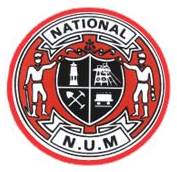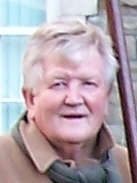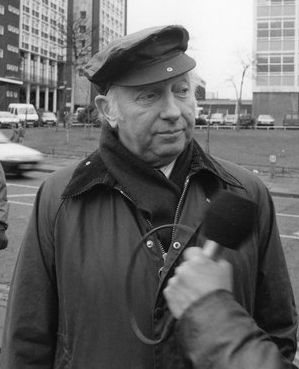The miners' strike of 1984–1985 was a major industrial action within the British coal industry in an attempt to prevent colliery closures. It was led by Arthur Scargill of the National Union of Mineworkers (NUM) against the National Coal Board (NCB), a government agency. Opposition to the strike was led by the Conservative government of Prime Minister Margaret Thatcher, who wanted to reduce the power of the trade unions.

The National Union of Mineworkers (NUM) is a trade union for coal miners in Great Britain, formed in 1945 from the Miners' Federation of Great Britain (MFGB). The NUM took part in three national miners' strikes, in 1972, 1974 and 1984–85. Following the 1984–85 strike, and the subsequent closure of most of Britain's coal mines, it became a much smaller union. It had around 170,000 members when Arthur Scargill became leader in 1981, a figure which had fallen in 2023 to an active membership of 82.
Manton is a former pit village and suburb of south-east Worksop in north Nottinghamshire, England.

Woolley Colliery is a village on the border between the Barnsley and Wakefield districts in Yorkshire, England. The village is now in South Yorkshire, while the former colliery was in the Wakefield Rural Ward in West Yorkshire. The village is known locally as Mucky Woolley, as a tribute to its coalmining heritage and to distinguish it from the more affluent village of Woolley two miles away.
The Union of Democratic Mineworkers (UDM) was a British trade union for coal miners based in Nottinghamshire, England, established in 1985, after the 1984–85 miners' strike, when the Nottinghamshire Area of the National Union of Mineworkers was involved in a number of disputes with the National Executive Committee that led to a split from the NUM. In ballots on joining with Nottinghamshire in a new union, the South Derbyshire Area of the NUM voted in favour by 51% and the Colliery Workers and Allied Trades Association by almost 100%.

Michael McGahey was a Scottish miners' leader and Communist. He had a distinctive gravelly voice, and described himself as "a product of my class and my movement".
The Miners' Federation of Great Britain (MFGB) was established after a meeting of local mining trade unions in Newport, Wales in 1888. The federation was formed to represent and co-ordinate the affairs of local and regional miners' unions in England, Scotland and Wales whose associations remained largely autonomous. At its peak, the federation represented nearly one million workers. It was reorganised into the National Union of Mineworkers in 1945.
"Blackleg Miner" is a 19th-century English folk song, originally from Northumberland. Its Roud number is 3193. The song is one of the most controversial English folk songs owing to its depiction of violence against strikebreakers.
Lawrence Daly was a coal miner, trade unionist and political activist.
The South Yorkshire Coalfield is so named from its position within Yorkshire. It covers most of South Yorkshire, West Yorkshire and a small part of North Yorkshire. The exposed coalfield outcrops in the Pennine foothills and dips under Permian rocks in the east. Its most famous coal seam is the Barnsley Bed. Coal has been mined from shallow seams and outcrops since medieval times and possibly earlier.

Tyrone O'Sullivan was a Welsh trade unionist who was Branch Secretary of the National Union of Mineworkers (NUM) and Chairman of Goitre Tower Anthracite Ltd., the owners of Tower Colliery.

The Nottinghamshire Miners' Association was a trade union representing coal miners in Nottinghamshire, England.
The Kent Miners' Association was a trade union in the United Kingdom which existed between 1915 and 1945, representing coal miners in the county of Kent. After 1945 it was reorganised as the Kent Area of the National Union of Mineworkers.
Sir Sidney Ford, MBE was a British trade union leader.
The 1972 UK miners' strike was a major dispute over pay between the National Union of Mineworkers (NUM) and the Conservative Edward Heath government of the United Kingdom. Miners' wages had not kept pace with those of other industrial workers since 1960. The strike began on 9 January 1972 and ended on 28 February 1972, when the miners returned to work. The strike was called by the National Executive Committee of the NUM and ended when the miners accepted an improved pay offer in a ballot. It was the first time since 1926 that British miners had been on official strike, but there had been a widespread unofficial strike in 1969.

Arthur Scargill is a British trade unionist who was President of the National Union of Mineworkers (NUM) from 1982 to 2002. He is best known for leading the UK miners' strike (1984–85), a major event in the history of the British labour movement.
The UK miners' strike of 1969 was an unofficial strike that involved 140 of the 307 collieries owned by the National Coal Board, including all collieries in the Yorkshire area. The strike began on 13 October 1969 and lasted for roughly two weeks, with some pits returning to work before others. The NCB lost £15 million and 2.5 million tonnes of coal as a result of the strike.
Owen Briscoe was a British trade unionist.
Roy Lynk OBE was a leader of the Union of Democratic Mineworkers.
Anne Harper is a British community organiser, activist and co-founder of the National Women Against Pit Closures (NWAPC) movement from Barnsley, South Yorkshire. She was politically active during the 1984–85 miners' strike as an activist, community organiser and wife of the then President of the National Union of Mineworkers (NUM), Arthur Scargill. The couple divorced in 2001.







